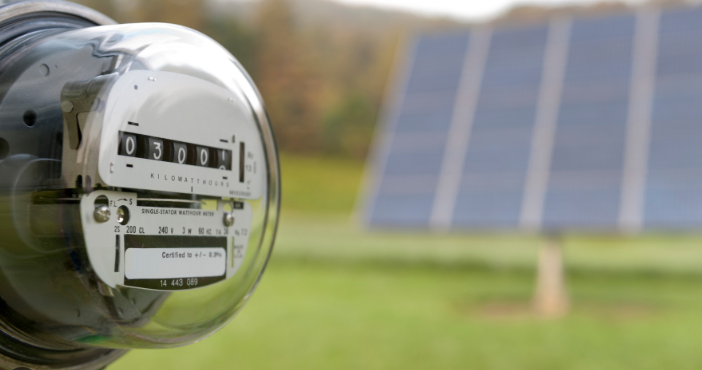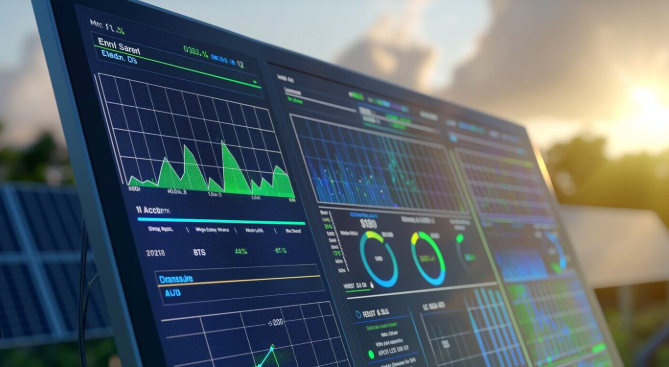The rise of renewable energy solutions has dramatically changed the way we generate and consume electricity. Solar power is one of the most popular sources of renewable energy, providing an environmentally friendly and cost-effective way to reduce reliance on fossil fuels. One key aspect of solar energy systems that contributes to their success is net metering, which allows excess energy generated by solar panels to be sent back to the grid. In this blog, we will explore how solar power meters work alongside net metering to optimize energy usage and reduce electricity costs.
We will provide a detailed breakdown of how solar power systems and net metering interact, supported by a diagram that visually explains the process. Additionally, we will discuss how solar meters, such as the Mushroom Solar Power Meter, can enhance the monitoring of solar energy production and consumption.
1. What is Solar Power Metering?
Solar power meters are devices used to monitor the performance of solar power systems. They measure important data such as energy generation, energy consumption, and the amount of power sent back to the grid. By tracking these variables, a solar power meter helps users understand their energy usage and make informed decisions about optimizing their solar setup.
There are several key components that make up a solar power metering system:
1. Solar Panels: These generate electricity by converting sunlight into direct current (DC) electricity.
2. Inverter: The inverter converts the DC electricity into alternating current (AC) electricity, which is suitable for home and business use.
3. Solar Power Meter: This device measures the amount of energy generated by the solar panels and consumed by the connected system. It also tracks any excess energy that is exported to the grid.

2. Understanding Net Metering
Net metering is a billing arrangement that allows solar energy system owners to receive credits for the excess energy they produce and send back to the grid. The energy meter tracks both the electricity consumed from the grid and the electricity sent back to the grid. If a system generates more electricity than it uses, the excess is credited to the user's account, effectively lowering their electricity bill.
How Net Metering Works with Solar Power Systems:
1. Energy Generation: Solar panels produce electricity during daylight hours. This energy is first used to power the home or business. If the system generates more electricity than is needed, the excess energy is fed back into the electrical grid.
2. Energy Consumption: When the solar system is not producing enough energy (such as during nighttime), electricity is drawn from the grid. The solar power meter tracks both the consumption from the grid and the energy exported back.
3. Grid Connection: The utility company tracks the amount of energy sent back to the grid and credits the user's account based on the amount of excess energy generated by the solar panels.
4. Billing: At the end of the billing cycle, the utility company calculates the total amount of energy consumed from the grid and subtracts the energy credits from the exported power, resulting in a lower electricity bill for the user.
3. The Role of the Solar Power Meter in Net Metering
A solar power meter plays a crucial role in this process by accurately measuring both the energy production and consumption. This data allows homeowners and businesses to track their energy usage, optimize their solar power system's performance, and ensure that they are taking full advantage of net metering benefits.
Key Functions of the Solar Power Meter:
1. Real-Time Monitoring: The solar power meter provides real-time data on energy generation and consumption, allowing users to track their solar power usage at any time.

2. Energy Export Tracking: The solar panel meter monitors the amount of energy exported to the grid, which is critical for net metering credits.
3. Efficiency Optimization: By measuring solar energy production, the solar energy meter can help users identify inefficiencies in their system and make adjustments to improve performance.
4. Diagram: How Solar Power and Net Metering Work Together
Below is a simplified diagram that shows how solar power systems work in conjunction with net metering:
|
Component |
Function |
Role in Net Metering |
|
Solar Panels |
Convert sunlight into DC electricity |
Generate energy, some of which is used on-site, and some is exported |
|
Inverter |
Converts DC to AC power |
Powers home/business and feeds excess energy to the grid |
|
Solar Power Meter |
Measures energy generation and consumption |
Tracks both power used and exported to the grid |
|
Utility Grid |
Supplies energy when solar production is low |
Receives excess solar energy and credits the user’s account |
5. Benefits of Using a Solar Power Meter for Net Metering
There are several benefits of integrating a solar power monitor with net metering:
1. Cost Savings: By accurately tracking energy production and consumption, users can ensure they are maximizing their energy credits and reducing their electricity costs.
2. Optimized Energy Use: The solar energy meter provides insight into when solar energy is being used most efficiently and when energy consumption can be adjusted for better savings.
3. Transparency: With real-time data, users have full visibility into how much energy is being generated and consumed, allowing for more effective management of their solar systems.
4. Increased Sustainability: Monitoring solar energy generation and consumption helps users reduce their reliance on grid power, leading to more sustainable energy usage and a lower carbon footprint.

6. The Mushroom Solar Power Meter: A Solution for Efficient Solar Monitoring
The Mushroom Solar Power Meter is an advanced solution for monitoring solar energy systems. It tracks both energy production and consumption with high precision, making it an essential tool for users participating in net metering programs. By providing accurate, real-time data, the solar meter helps users optimize their solar energy systems, maximize energy credits, and reduce energy costs.
Key features of the Mushroom Solar Power Meter include:
1. Real-Time Data: Provides continuous updates on energy generation and consumption.
2. High Accuracy: Ensures precise measurement of energy usage and export for effective net metering.
3. User-Friendly Interface: Easy-to-read digital displays and app integration for remote monitoring.
For more information on how the Mushroom Solar Power Meter can enhance your solar energy system and optimize net metering, visit Mushroom Solar Power Meter.
Conclusion
Incorporating net metering into your solar energy system is a powerful way to optimize energy use and reduce electricity costs. By leveraging a solar power meter, you can track energy generation, consumption, and export with accuracy, ensuring that you are making the most of your solar setup. The Mushroom Solar Power Meter provides a reliable and user-friendly solution for managing solar power and maximizing savings through net metering.
To learn more about how the Mushroom Solar Power Meter can help you monitor and manage your solar energy system, visit Mushroom Solar.
If you want to know more about solar power meter, please click the follows:
① Understanding the Importance of a Solar Power Meter in Efficient Solar Power Monitoring
③ Enhancing Commercial Energy Efficiency with Solar Power Meters


